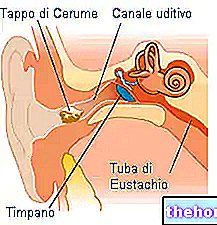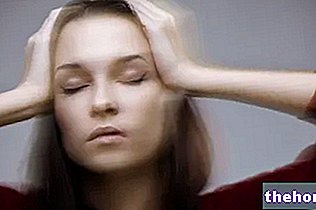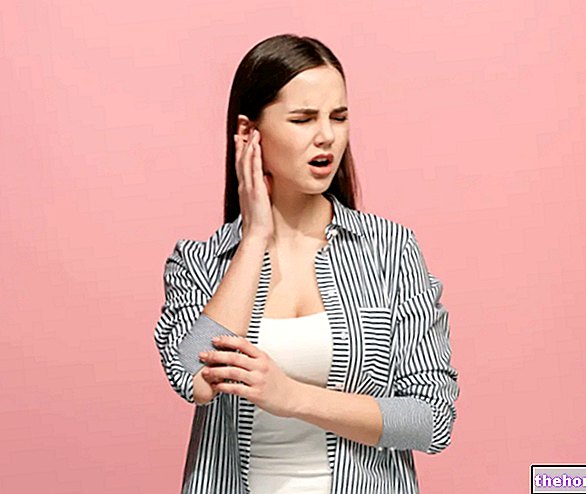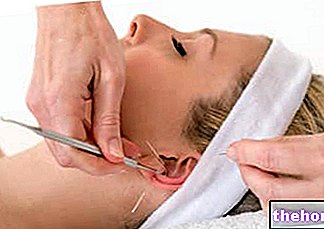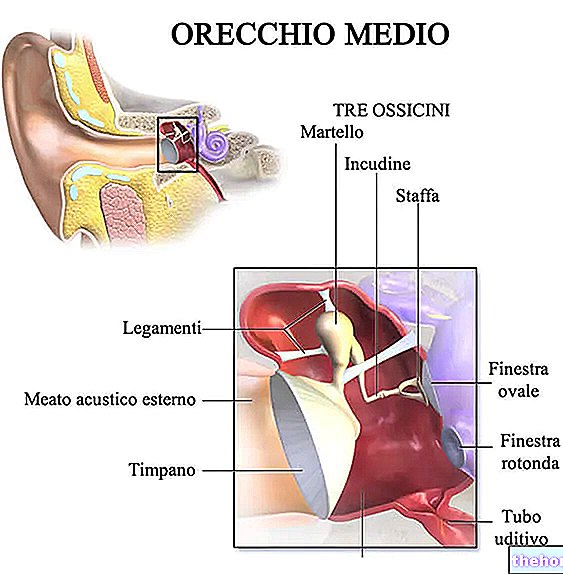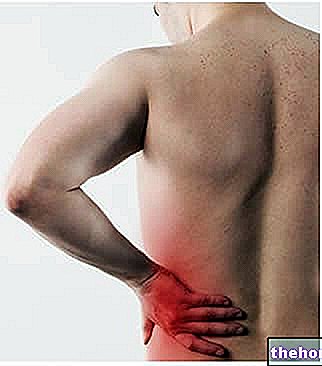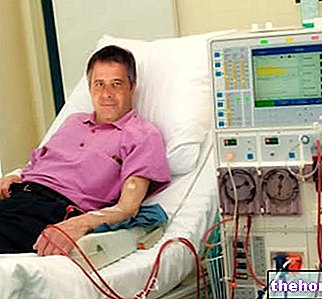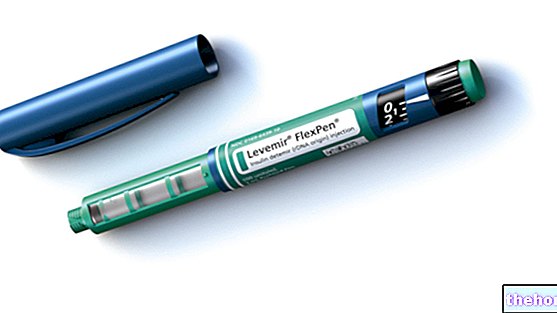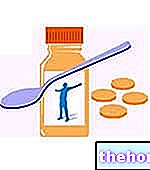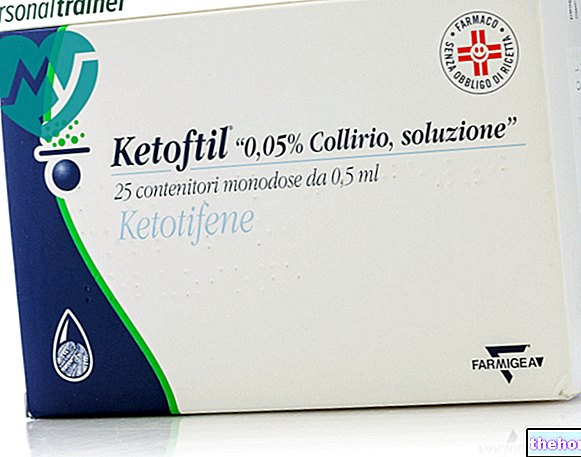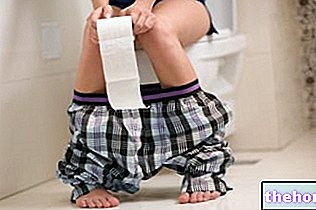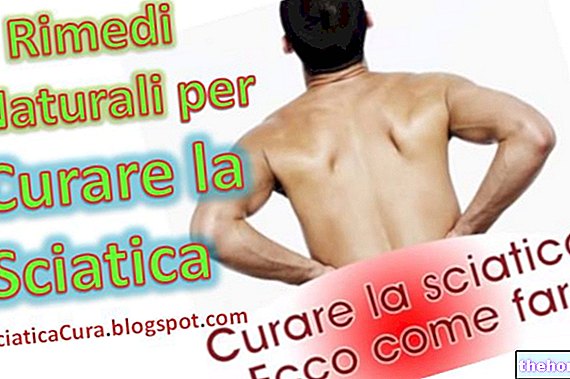Generality
Auriculotherapy is a therapeutic practice of alternative medicine, which involves the stimulation of the auricle, with the final aim of bringing benefits to other parts of the body.

According to its practitioners, auriculotherapy would bring benefits in case of: overweight / obesity, anxiety, minor depression, insomnia, addiction to cigarette smoking, alcohol addiction and the presence of chronic pain.
Currently, no clinical and scientific studies have demonstrated the effective therapeutic efficacy of auriculotherapy.
Brief anatomical review of the external ear and the auricle
The outer ear is, together with the middle ear and the inner ear, one of the three portions into which the ear can be divided, that is the organ of hearing and balance.
Visible to the naked eye on the sides of the head, the external ear includes: the pinna, the external auditory canal (external acoustic meatus) and the external surface of the eardrum.
HEADSET PAVILION
Covered with skin, the auricle is a predominantly cartilage structure, on which anatomists identify various characteristic areas, including:
- two curved rhymes, one more external than the other, called helix and antihelix;
- two protrusions, called the tragus and antitragus, which tend to cover the external auditory canal;
- the basin, which is the concave region in which the opening of the external acoustic meatus takes place;
- the lobe, consisting of adipose tissue and located on the lower edge.

What is auriculotherapy?
Auriculotherapy is a therapeutic practice of alternative medicine, which involves the stimulation of the external surface of the auricle, by means of appropriate instruments; these maneuvers are carried out with the ultimate intent of bringing benefits to other parts of the body, whether these organs, bone structures, glands etc.
The therapeutic power of auriculotherapy is based on the idea that the auricle of the external ear is a microsystem, which reflects the entire human body.
In other words, the auriculotherapists - that is, the lovers of auriculotherapy - base all their statements on the assumption that, in the auricles, there are areas (or zones) connected to a very precise anatomical structure of the human body.
The figure below shows the mapping of the auricle, according to the theories of modern auriculotherapists.

Figure: in the auricles of the human being, the auriculotherapists have marked more than 200 points (or zones) of stimulation. In this image, only a few are represented. Image from the site: mednat.org
SYNONYMS
There are various synonyms of auriculotherapy, including: auricular therapy, auricular acupuncture, and auricular reflexology.
SIMILAR TECHNIQUES
There are other alternative medicine techniques which, such as auriculotherapy, consider possible a connection between a very specific anatomical element (eg: auricle) and the rest of the human body (the various organs, bones, glands, etc.).
Among the techniques similar to auriculotherapy, foot reflexology and iridology deserve a mention.
Briefly, foot reflexology is a therapeutic practice that is considered beneficial for the human body by the pressure and massage of the soles of the feet and the palms of the hands. At the basis of foot reflexology there is the idea that specific organs, nerve structures, joints, etc. correspond to certain areas of the feet and hands.
Iridology, on the other hand, is a diagnostic practice which deems it possible to evaluate the state of health of a person by observing the characteristics of the iris.
At the base of "iridology there is the" idea that the irises represent an anatomical mapping of the human body, which includes organs, joints, bone structures and glands.
HISTORY
According to some historical sources, the origins of auriculotherapy are very ancient; in fact, there are written records of practices similar to auriculotherapy dating back to 500 BC.
Nevertheless, "modern auriculotherapy - where by" modern "means in vogue today - is a rather recent practice, born in 1957 to be precise. Its founder was the French-born neurologist Paul Nogier (1908-1996 ), who in the aforementioned year published a paper entitled "Treatise on auriculotherapy".
In his "Treatise on auriculotherapy", Nogier states that the auricle is a map of the organs of the human body and that the stimulation of a part of it, through acupuncture needles and other similar objects, has beneficial effects at the level of the organ corresponding to the part stimulated.
In his writings, Nogier also reports a mapping of the auricle very similar to the current ones.
Certainly, the knowledge of Chinese acupuncture influenced Nogier's conclusions.
Moving on to more recent times, it should be noted that, at the turn of the "80s and" 90s, auriculotherapy received the first recognitions from the WHO (ie the "World Health Organization), which accepted for the first time the mapping of the auricle, proposed by the auricular therapists.
In Italy, an important date, as far as the history of auriculotherapy is concerned, is 1995: in that year, the National Federation of the Order of Doctors included the item "Auriculotherapy" in the FNOOM tariff, making it a medical therapy in all respects. official only practicable by medical graduates.
How does it work
From a biological point of view, auriculotherapy works by stimulating the central nervous system to release neurotransmitters and hormones with beneficial action on the cells of the human body. The neurotransmitters involved are molecules that are used to modulate pain or to start healing processes cellular; the hormones involved, on the other hand, are molecules with a pain-relieving function (endorphins are the most important example).
Indications
According to its creators and promoters, auriculotherapy would be of benefit in case of:
- Overweight, obesity and eating disorders in general. The stimulation of certain parts of the auricle would increase the metabolic activity of the human body, reduce appetite and improve the activity of two hormones - insulin and serotonin - which play an important role in the mechanisms that regulate the sense of satiety and the intake of food in general.
- Anxiety, Anxiety Disorders, Insomnia, and Minor Depression. Some auricular therapists believe that stimulation of the pinna aids relaxation, reduces stress, and instills positive energy in anxious and low-mood people.
For these anti-stress and anti-anxiety effects, auriculotherapy is recommended for people who, for health reasons, are about to undergo a delicate surgery. - Chronic pains. The stimulation of some areas of the auricle would reduce the transmission of nerve impulses, which in the human being make one feel pain, and would favor the release of endorphins, which are chemical substances produced by the brain and endowed with a powerful analgesic and exciting activity.
Furthermore, it would be able to alleviate / cure addictions to smoking and alcohol, thus meeting those who want to quit smoking and those who are addicted to alcohol.
IS A COMBINATION WITH TRADITIONAL MEDICINE POSSIBLE?
Practitioners of auriculotherapy claim that the latter can be combined, without problems, with traditional medicine practices.
Instrumentation
In auriculotherapy, stimulation of the outer surface of the auricle can take place in at least three ways:
- Through the insertion of acupuncture needles;
- Through micro-electric discharges;
- By laser.
Currently, the use of electrical micro-discharges is very popular and has supplanted stimulation using acupuncture needles, which is the stimulatory method practiced at the dawn of auriculotherapy.
The use of lasers for stimulation is a method in the process of improvement, which at the moment only a few auriculotherapists practice.
The stimulation method that involves the use of acupuncture needles is the reason why auriculotherapy is also called auricular acupuncture.
AURICULOTHERAPY THROUGH ELECTRIC MICRO-SHOCKS
The instrument that allows to stimulate the auricle, through electrical micro-discharges, is an electrode, whose operation can depend on the electrical network or on a rechargeable battery.
Often, this electrode looks like a pen with a metal tip.
Characteristics of a typical session
Before the auricular stimulation begins, it is essential that the auricular therapist asks the patient why the latter has opted for the auricular therapy. Basically, he wants to know the health problems that prompted the patient to ask for the This helps him to perform a correct stimulation of the auricle.
At the end of this preliminary phase, similar to an "anamnesis," the practical part of the treatment begins.
The duration of a generic session and the total number of sessions depend on the entity and number of problems reported by the patient.
Risks and complications
Auriculotherapy is a substantially very safe and low-risk therapeutic practice. In fact, only in very rare circumstances can it give rise to side effects.
The possible side effects of auriculotherapy include:
- Pain or discomfort in the auricle, at the level of the stimulated areas;
- Sense of soreness at the level of the auricle;
- Inflammation of the auricle;
- Episodes of infection. The possibility of infection is exclusive to auriculotherapy which uses acupuncture needles to stimulate the auricle.
Contraindications
The contraindications of auriculotherapy depend on the type of instrument used to stimulate the auricle.
Here, the contraindications of the two most common stimulation methods will be discussed, namely the use of acupuncture needles and the use of electrical micro-discharges.
AURICULOTHERAPY THROUGH NEEDLES
Auriculotherapy performed with needles is contraindicated for people who have lesions or abrasions at the level of the auricles, as it could be painful and lead to the appearance of an infection.
AURICULOTHERAPY THROUGH ELECTRIC SHOCKS
Auriculotherapy by means of electrical micro-discharges is contraindicated to three categories of individuals: those with a pacemaker or a portable cardioverter defibrillator, pregnant women and, once again, those who have lesions or abrasions at the level of the auricle.
- People with a pacemaker or portable cardioverter defibrillator: in these circumstances, the contraindication is explained by the fact that the electric shocks, delivered for therapeutic purposes, could interfere with the correct functioning of the electronic device, which controls the heart's rhythm.
- Pregnant women: in these situations, the contraindication is based on the suspicion that the "usual" electrical discharges could cause fetal damage, thus compromising the normal development of the fetus.
- People with injuries or abrasions at the level of the auricles. In these cases, the contraindication is linked to the fact that auriculotherapy can be painful or annoying.
Criticisms
Currently, no scientific and clinical studies have demonstrated the effective efficacy of auriculotherapy. In other words, modern auriculotherapy lacks any scientific foundation.
It is for this undeserved therapeutic efficacy that auriculotherapy receives little approval from the medical community.

